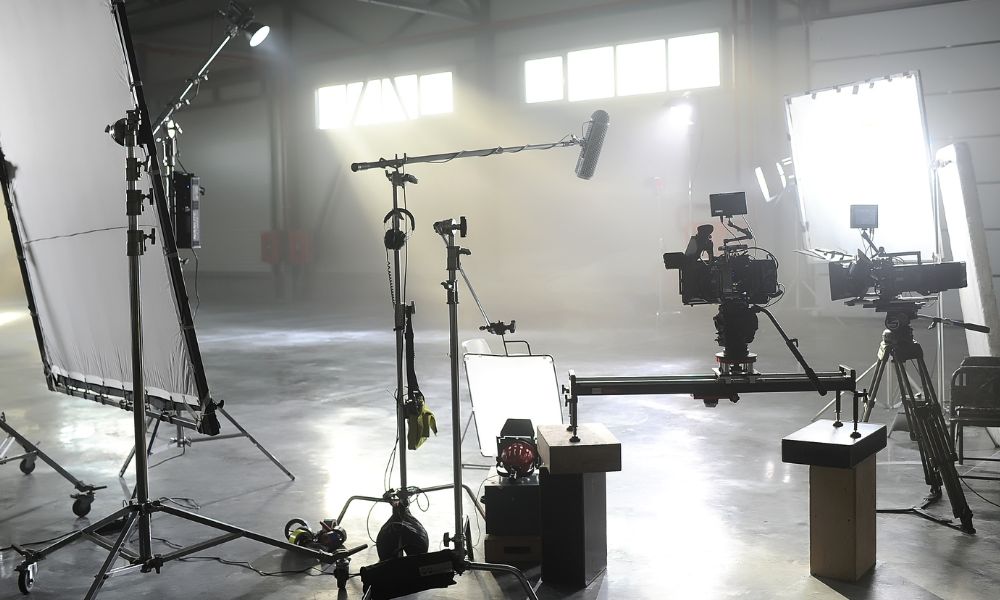 “Lights, camera, action” has been a well-known saying for decades. It’s known by those in and outside the entertainment industry. As the first word in the sequence, lights play a prominent part in filmmaking. It affects the quality, tone, atmosphere, and look of a shoot. There are many ways to set a scene using only lights. Here are four different types of video production lighting that transform a film set.
“Lights, camera, action” has been a well-known saying for decades. It’s known by those in and outside the entertainment industry. As the first word in the sequence, lights play a prominent part in filmmaking. It affects the quality, tone, atmosphere, and look of a shoot. There are many ways to set a scene using only lights. Here are four different types of video production lighting that transform a film set.
The Basic Three-Point Setup
Being able to crush three-point lighting is one of the best skills to have in video production. It covers all the essentials: key lighting, fill lighting, and backlighting. It illuminates your subject from different angles, defining its dimensions. Most three-point lighting setups use adjustable standing lights to better achieve the appropriate angles for the different lighting mechanisms used in a three-point setup.
Key Lighting
Key lighting is placed facing the front of the subject. It’s the brightest and main source of light out of the trio.
Fill Lighting
Fill lighting is another front-facing light source. It mirrors the key lighting, filling in shadows. This type of lighting provides soft filler illumination.
Backlighting
Backlighting faces the subject’s rear. It’s used to create an outline, separating the subject from its background.
Practical On-Set Lighting
Practical lighting derives from everyday light sources like lamps, candles, and screens. Their main purpose is to add reality to a scene rather than highlighting and illuminating a subject. Practical lighting decorates a backdrop and set.
Soft and Hard Illumination
Soft and hard (or harsh) illumination influences the intensity of a set’s lighting. Soft lighting produces a more gentle glow that blends shadows and softens edges and subject outlines. Creating a soft light involves using a softbox or screen over your lights, shading the bulb’s rays.
Hard lighting, on the other hand, generates harsher lighting. It produces more distinct shadows and sharp outlines that separate different focal points from their surroundings. It illuminates a subject, directing all attention toward them.
Ambient and Motivated Lighting
Ambient lighting uses more natural light sources, such as flames and sunlight. It creates atmospheric sets that generate certain moods and tones. Motivated lighting involves using production lights to mimic natural lighting. Like ambient lighting, it sets the tone and creates certain atmospheres. However, motivated lighting gives you more control and filming flexibility.
Generate various scenes, tones, and looks as you enhance your shoots with these different types of video production lighting. From the classic three-point setup to ambient lighting, there are many ways to illuminate your shots. After you sort out your lighting, you can move on to your camera and get ready for action. Check out Ikan’s selection of production lights and experiment with the many ways to light up your set.
